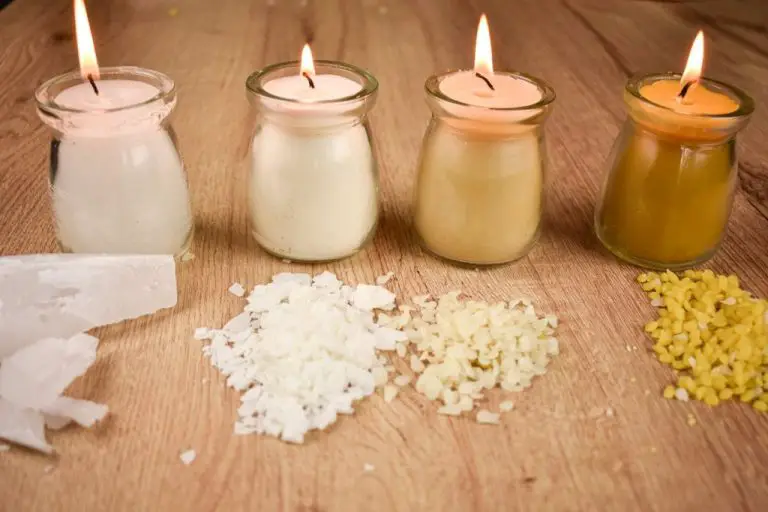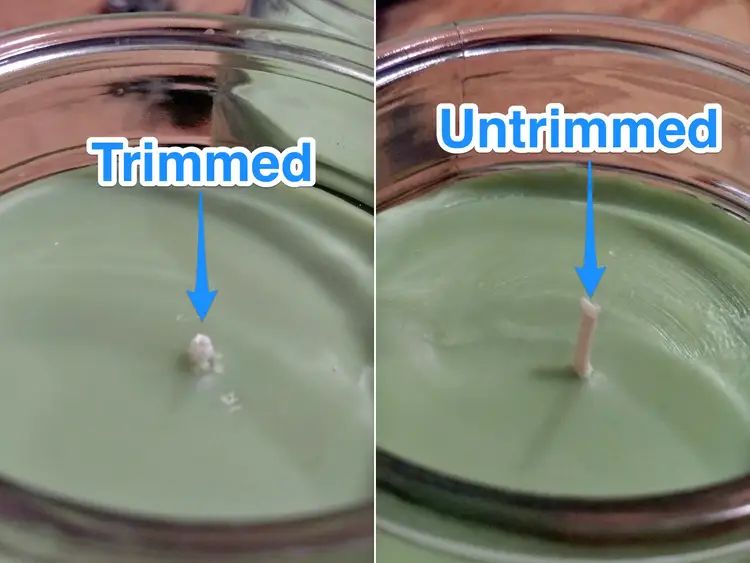How Long Does It Take For Wax To Harden In Silicone Molds?
Wax casting with molds is a lost wax casting technique that involves pouring molten wax into reusable silicone molds to create detailed wax replicas for jewelry casting or other applications. The silicone allows for easy mold release once the hot wax has hardened and cooled. Wax casting with molds provides a consistent and efficient way to produce multiple identical wax patterns.
The process involves heating up wax, often jewelry wax or casting wax, until melted. The silicone mold is prepared by spraying with mold release if needed. The molten wax is then carefully poured into the mold cavity and allowed to cool and harden fully before removing from the mold.
The time it takes for the wax to harden depends on several factors. This includes the type of wax used, the pouring temperature, the material and thickness of the silicone mold, and the ambient temperature. Generally, most waxes will harden within 5-30 minutes under normal conditions. This guide will provide an overview of how long various waxes take to cure in silicone molds and what affects the hardening rate.
Factors That Affect Wax Hardening Time
There are several key factors that impact how quickly wax will harden in silicone molds:
Wax Composition
The type of wax used will affect hardening time. Paraffin waxes tend to harden faster than vegetable-based waxes like soy or palm. Beeswax and gel waxes also take longer to harden than paraffin. The exact chemical composition of the wax determines its crystallization rate. According to research, waxes high in n-alkanes tend to harden faster ([source]).
Wax Temperature When Poured
The temperature of the wax when poured into the mold greatly impacts hardening time. Hotter wax takes longer to harden. Most waxes should be poured between 120-165°F to ensure proper hardening. Cooler wax below 115°F can harden too quickly and risk frosting or poor surface finish ([source]).
Silicone Mold Material
The type of silicone used for the mold also affects wax hardening rate. Higher quality platinum-cure silicones allow for faster wax hardening. Tin-cure or off-ratio silicones can inhibit crystallization and delay hardening.
Mold Temperature
Warmer molds will slow down wax hardening time. Cooler molds accelerate the hardening process. Preheating molds can help improve surface finish but will increase total time. Testing mold temperatures between 65-85°F helps find the ideal balance.
Environment/Ambient Temperature
Colder ambient temperatures speed up wax hardening. Cooler workshop conditions generally lead to faster crystallization. Warmer environments above 80°F slow hardening. Climate control can help regulate the wax hardening timeframe.
Recommended Pouring Temperatures
The recommended pouring temperature can vary depending on the type of wax used. Here are some general guidelines:
Paraffin Wax
Paraffin wax should be poured between 140-167°F, according to this source. Temperatures above 167°F can cause the wax to leak out of the mold and make it difficult to achieve a smooth surface finish.
Soy Wax
For soy wax, a temperature between 120-135°F is typically recommended, according to candle making experts. Going above 150°F can cause issues with adhesion and surface defects.
Beeswax
Beeswax has a much higher melting point than paraffin or soy, so it should be poured between 155-165°F. Pouring at temperatures below 150°F increases the chances of beeswax solidifying too quickly and not filling the mold correctly.
In general, it’s ideal to use an infrared thermometer and pour wax at the lowest temperature within the recommended range for the particular wax type. This helps ensure proper filling of the mold and allows the wax to solidify faster with less risk of defects.
How Long Each Type of Wax Takes to Harden
The amount of time it takes for wax to fully harden in silicone molds depends on the type of wax used.
Here are typical time ranges for common candle waxes to fully harden:
- Paraffin Wax: 3-5 days (https://armatagecandlecompany.com/blog/candle-curing/)
- Soy Wax: 10-14 days (https://armatagecandlecompany.com/blog/candle-curing/)
- Beeswax: 7-10 days (https://armatagecandlecompany.com/blog/candle-curing/)
Paraffin wax is the fastest to fully harden, taking only 3-5 days. Soy wax takes the longest at 10-14 days. Beeswax falls in the middle, needing 7-10 days to fully cure.
The differences come down to the chemical composition of each wax. Paraffin, a petroleum byproduct, hardens the quickest. Natural waxes like soy and beeswax take longer to fully set.
Silicone Mold Materials and Their Effect
The type of silicone used to make the mold can impact how quickly wax hardens inside it. There are two main types of silicone for candle making molds: platinum-cure and tin-cure.
Platinum-cure silicone is more heat resistant and durable, while tin-cure silicone is more flexible and affordable. Wax tends to harden faster in platinum-cure molds since they conduct heat better. Tin-cure molds insulate heat more, resulting in a slower hardening time.
The thickness of the silicone also affects conductivity. Thinner silicone molds allow heat to dissipate faster versus thicker molds that insulate heat. For quicker hardening, choose platinum-cure silicone in a thinner mold design.
Testing different silicone molds with varying materials and thicknesses can help determine which work best for your needs. The type of wax and pouring temperatures used will also impact all of these factors. Finding the right balance allows the wax to reach a hardened state in an ideal timeframe.
Ambient Temperature Considerations
The temperature of the room where wax molds are cooling and hardening can significantly impact the time it takes for the wax to fully set. Ideal workshop temperatures for wax pouring and cooling tend to be between 65-85°F (18-29°C). If the ambient temperature is too cold, such as below 60°F (15°C), the wax will take considerably longer to harden. This is because wax hardens through the process of crystallization as it cools, which occurs more rapidly at warmer temperatures.
In colder conditions, heat dissipation from the wax occurs more slowly, hindering the crystallization process. The faster wax can dissipate heat into the surrounding air, the quicker crystallization and hardening will occur. This is why wax may take longer to harden in a silicone mold with thick walls that insulate the wax compared to thin-walled molds.
To help manage ambient workshop temperatures, use space heaters or fans to regulate the temperature. Avoid any extreme temperature fluctuations which can cause cracks or separation in the wax. With proper temperature regulation around 70°F (21°C), most wax should fully harden within 1-2 hours in silicone molds.
Tips for Faster Wax Hardening
There are a few techniques you can use to make your wax harden faster in silicone molds:
Pre-warm your molds before pouring by placing them in a warm area for 10-15 minutes. This brings the mold temperature closer to the wax pouring temperature, allowing the wax to cool and solidify faster once poured (source). Be careful not to overheat the molds as this can cause deformation.
Pour wax at the highest recommended temperature for that wax type. Pouring at higher temps means the wax has less cooling to do before hardening. Just don’t exceed the wax’s maximum pouring temperature (source).
Use faster-setting waxes like soy, beeswax, or palm wax rather than slower-setting paraffin. The natural waxes contain crystalline structures that solidify quicker than paraffin (source).
Troubleshooting Slow Wax Hardening
If your wax is taking longer than expected to harden and set in your silicone molds, there are a few troubleshooting tips you can try:
Adjust pouring temperature – Pouring wax at too high of a temperature can lead to slower hardening. Try reducing your pouring temp by 5-10 degrees to see if that helps the wax set up faster (Source: https://www.candlescience.com/wax/soy-wax-trouble-shooting-guide/).
Warm workspace – Cool ambient temperatures can delay hardening. Try moving your workspace to a warmer room in your home or use a space heater to warm the area while your candles are setting (Source: https://villagecraftandcandle.com/blogs/news/top-10-candle-making-problems-and-how-to-solve-them).
Switch waxes or molds – The type of wax and silicone mold can impact hardening time. Try switching to a wax formulated for faster crystallization or use a mold with thinner walls if hardening seems delayed (Source: https://scentssoapsandcandles.co.uk/guides/soy-candle-wax-troubleshooting/).
Safety Precautions
When working with hot wax, it’s important to take proper safety precautions to avoid burns or inhalation of wax fumes. Here are some key tips:
Wear heat-resistant gloves when handling hot wax. Silicone gloves with long cuffs provide good protection (source). Avoid direct skin contact with wax above 125°F.
Work in a well-ventilated area to prevent buildup of wax vapors. Open windows, use exhaust fans, or pour wax in a ventilated hood (source). Hold your head away from wax fumes.
Allow poured wax to fully cool and harden before handling molds to prevent burns. Set molds on a heat-resistant surface like stone or metal.
Keep flammable materials like paper towels away from hot wax. Have a fire extinguisher nearby in case of wax ignition.
Avoid breathing wax vapors for prolonged periods. Take regular breaks for fresh air. Wax fumes can cause respiratory irritation.
Store solid wax away from heat sources or open flames. Melted wax can spread quickly and be difficult to extinguish if ignited.
With proper handling techniques and ventilation, pouring wax into silicone molds can be done safely.
Conclusion
In summary, there are several key factors that affect how long it takes for wax to harden in silicone molds. The main considerations are the pouring temperature, the type of wax used, the silicone mold material, and the ambient temperature. In general, waxes poured between 150-165°F will harden the fastest. Beeswax and soy wax tend to harden quicker than paraffin wax. Platinum silicone molds allow for faster hardening compared to tin silicone. Cooler ambient temperatures will accelerate hardening time. Using these guidelines will help shorten the time for wax to fully cure in silicone molds.
The final recommendations are to pour waxes on the lower end of the recommended temperature range, use beeswax or soy wax if possible, choose platinum silicone molds, pour in a cool room around 65-75°F, and avoid disturbing or moving the molds until fully hardened. Following these best practices will result in the fastest wax curing times in silicone molds, generally between 30 minutes to 2 hours depending on the exact factors. Proper pouring and curing ensures the highest quality finished wax products.






